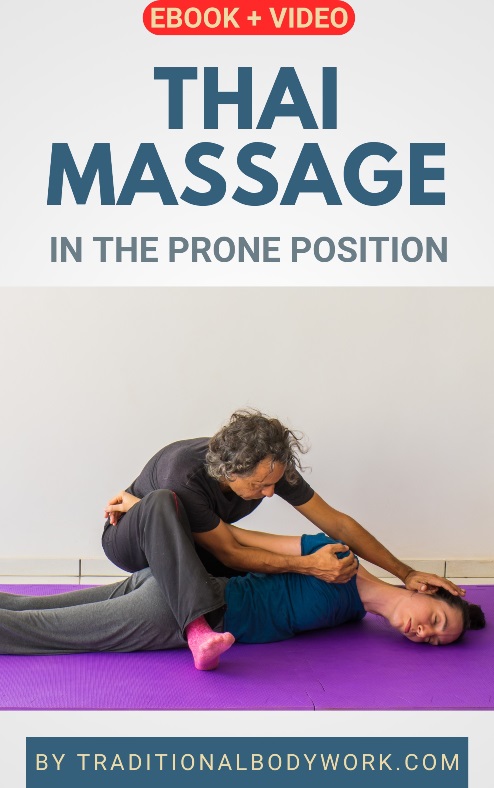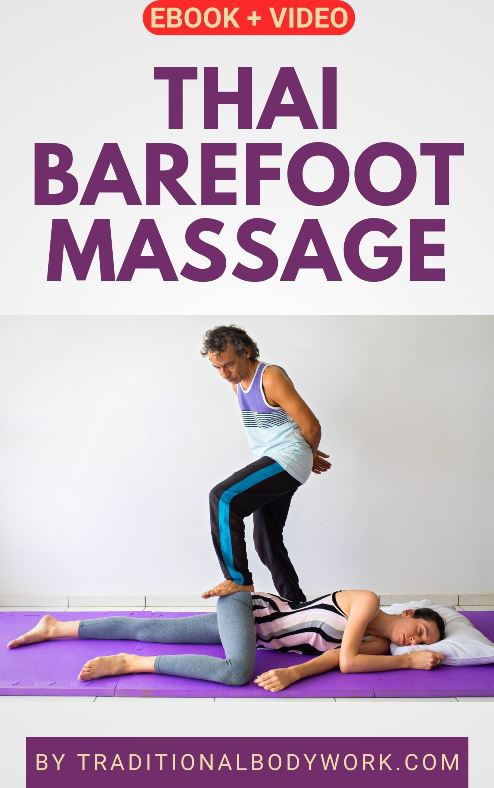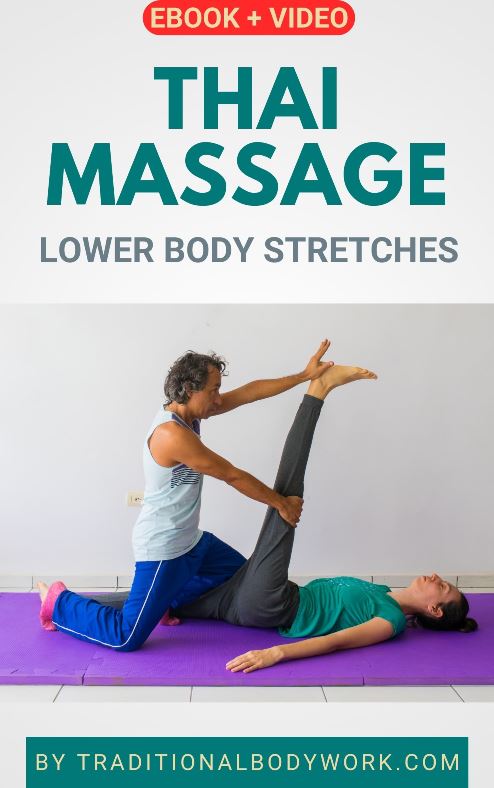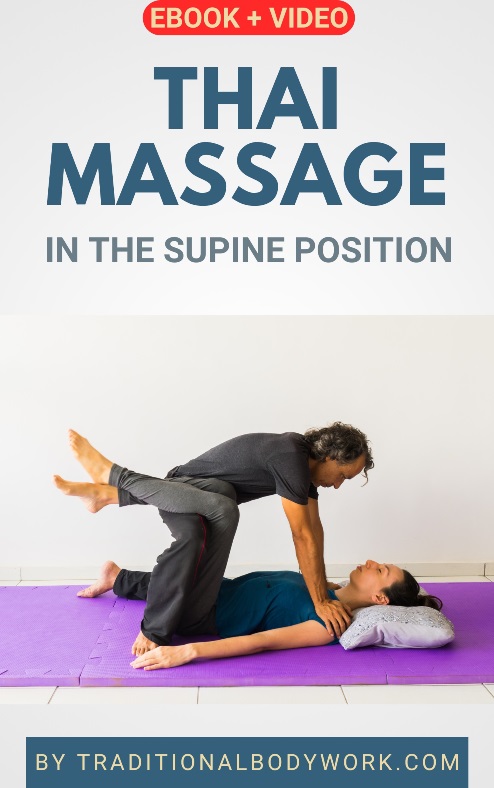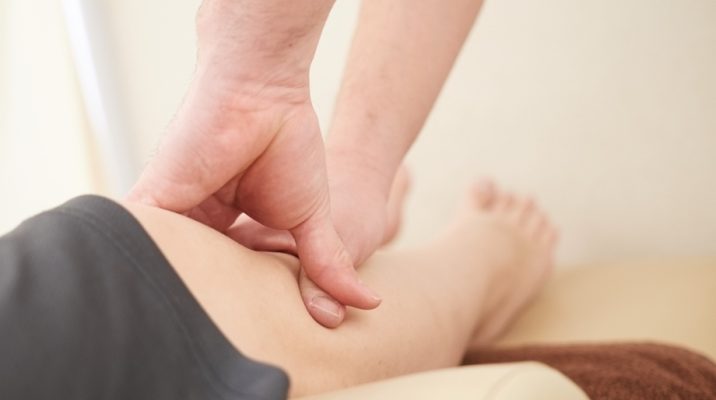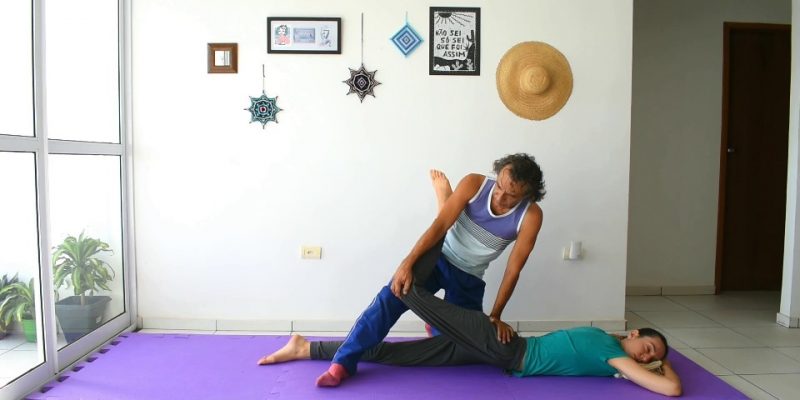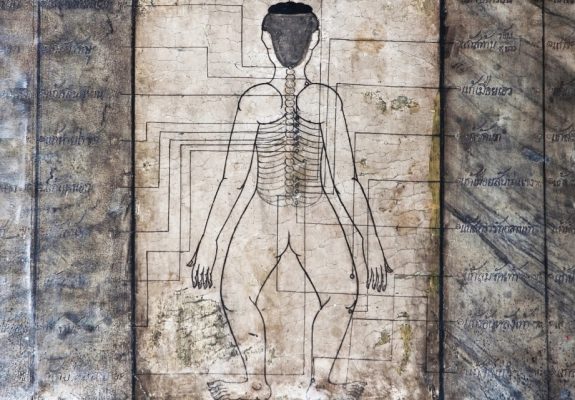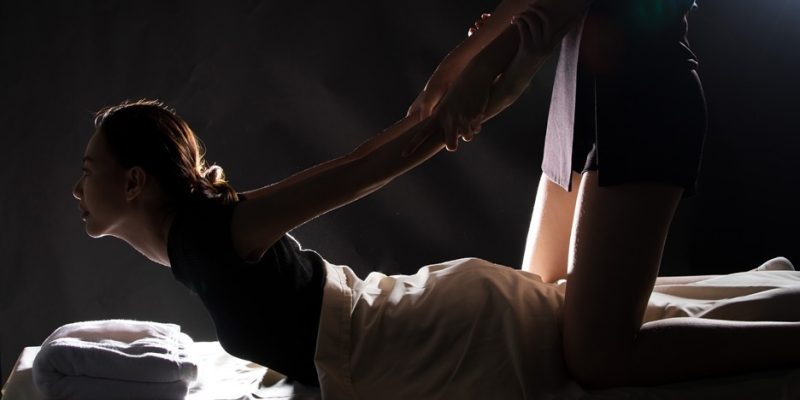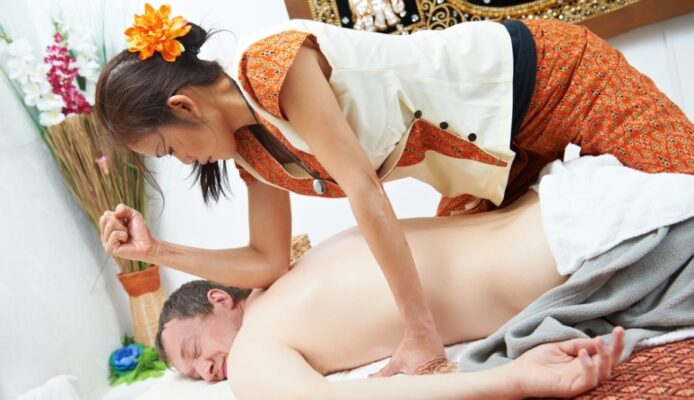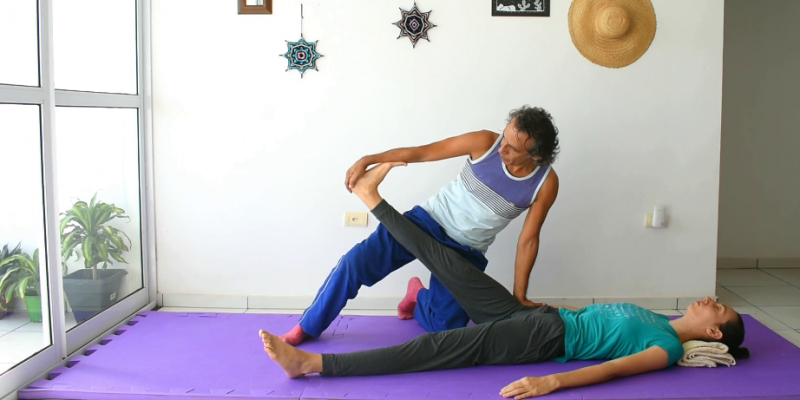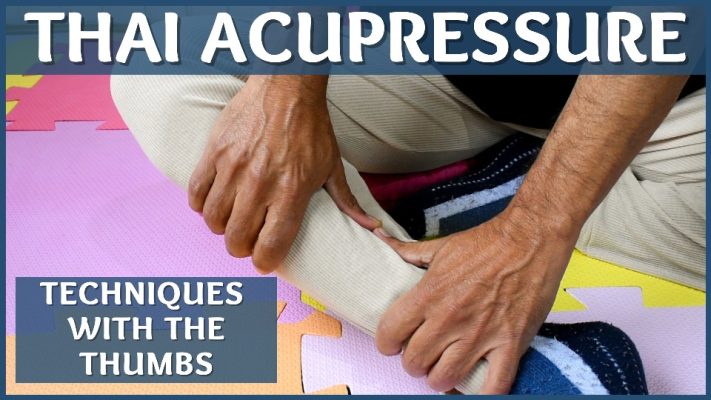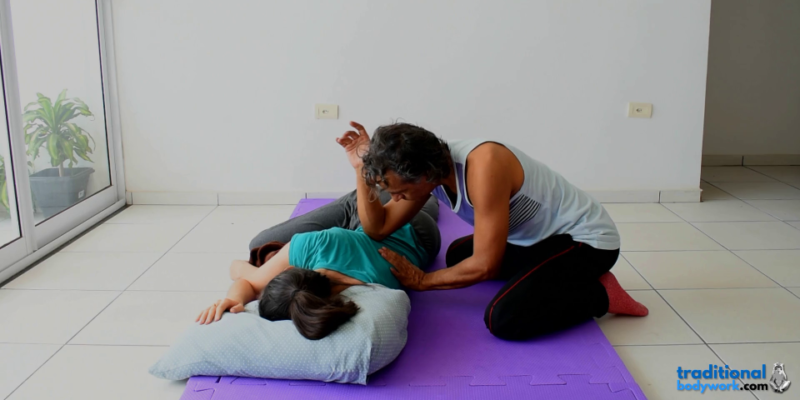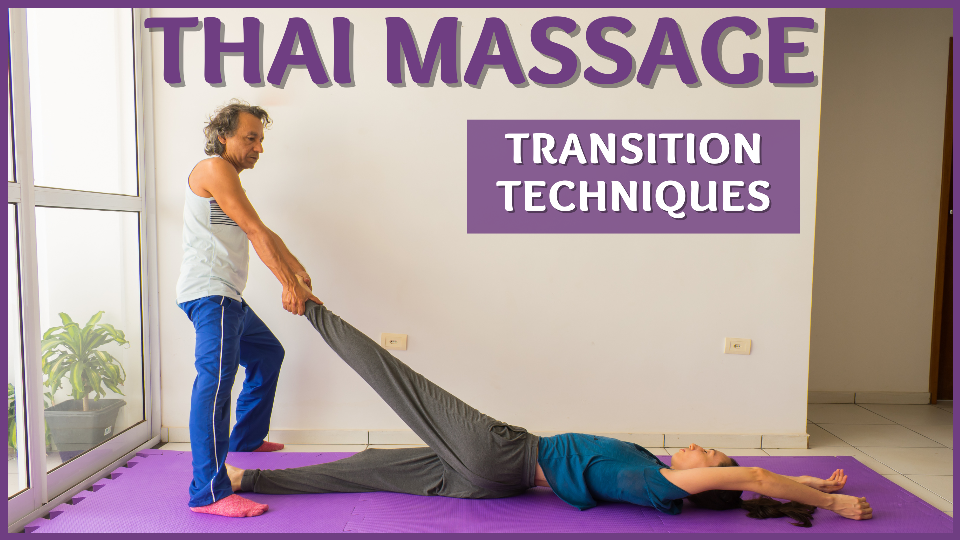
In Thai Massage, the practitioner basically uses three types of transitions. The first type includes transitions that support moving from one body part of the receiver to another, the second type is that of switching from one massage technique to another kind of massage technique, and the third type — of which we will talk in this post — is that of assisted receiver position transitions.
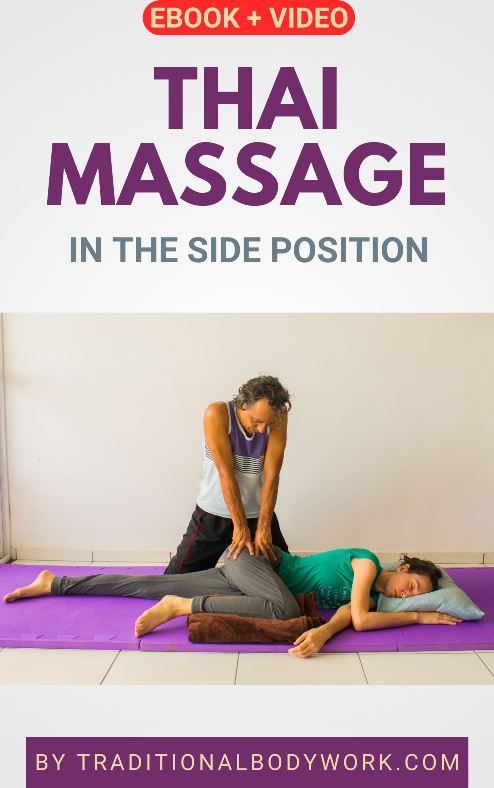
As it is, a Full Body Thai Massage session is typically given with the receiver being placed in various positions, which include the seated, side-lying, supine (lying on the back), and prone position (lying on the belly).
Changing the receiver’s massage position is not done for esthetic reasons, but because it enables the therapist to reach body parts that are otherwise not (easily) accessible, or simply done to be able to use other types of Thai Massage techniques.
Now, the Thai Massage therapist can certainly ask receivers to alternate their position themselves, but it’s actually much more relaxing to do the position transition for them. As a whole, the latter gives a Thai Massage session a smoother and also more professional feel for the receiver.
Thus, in Thai Massage you’ll find various techniques to switch the receiver’s position from, for instance, seated to prone or supine position or vice versa, or from the supine position to the side-lying position, and so on. Actually, you can place receivers from any position to any other type of position, without them needing to do anything.
At any rate, here below we’ve included a video that demonstrates some of the common assisted Thai Massage position transitions you can incorporate in your sessions. Enjoy!
Receive occasional news about our new eBook and Video Workshop publications.



